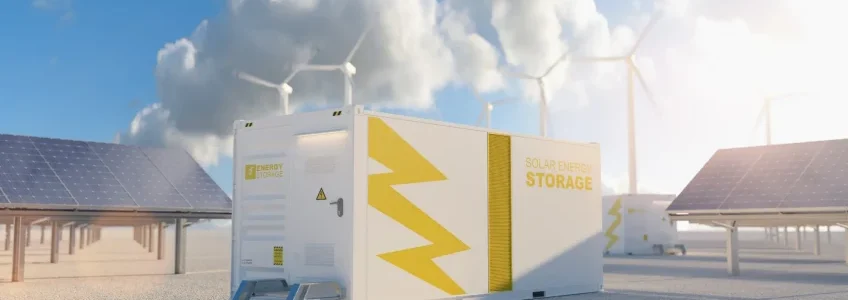The continued focus on renewable energy has led researchers to find new and improved long-term energy storage systems. While batteries made from lithium and other minerals have proven useful for energy farms, they are not sustainable, especially on a global scale.
Fortunately, with the continuous investment in research and development, there are potential solutions. These include commercial-scale ‘sand batteries’ from Finland and Switzerland’s 20 million kWh ‘water battery’, which is now operational after 14 years of development.
Sand Battery For Energy Storage
According to the BBC, a team of researchers from Finland has created the world’s first commercial-scale ‘sand battery’. It can be used to store power generated from renewable sources for months which can help address the ever-present issue of year-round renewable energy supply.
How Does A Sand Battery Work?
When excess power is generated from renewable energy sources, it is sent to the sand battery in a similar way as conventional energy storage systems.
However, instead of trying to move electrons from one electrode to the other or using power pumps to transport water from a lower reservoir, a sand battery employs resistive heating to increase air temperature, which is then transferred through a heat exchanger.
A tower of sand has tremendous potential to store energy since the sand’s melting temperature is hundreds of degrees Celsius. More importantly, sand can retain this energy for months at a time, making it an excellent long-term energy storage solution.
Is The Sand Battery Scalable?
Polar Night Energy has been working with a small power plant in Kankaanpää in western Finland to build the first sand battery on a commercial scale. Inside a tall grey silo, you will find approximately 100 tonnes of construction sand which is relatively inexpensive compared to lithium, cobalt, and nickel in other types of batteries. The battery is currently used to heat the district’s central heating system. When energy costs rise, the hot air in the battery may be used to warm the water before distributing it throughout the region.
Water Battery For Energy Storage
Scientists from around the world have been experimenting with alternative energy storage ideas for quite some time. A few concepts include using carbon dioxide or tapping into elevators in high-rise buildings for rapid energy dissipation when there is a peak in demand. While many of these ideas are mostly experimental, a water battery has proven efficiency.
How Do Water Batteries Work?
A water battery has two separate water tanks at different heights. When energy generation is high, excess power is used to move water from the lower to the higher pool, similar to charging a normal battery.
As power demand rises, the water in the higher pool flows down to the lower pool and goes through turbines that produce electricity which can then be fed into the grid. While the concept may seem new, Switzerland has been using this application for centuries.
The water battery, which is now operational in Switzerland, has a capacity of 20 million kWh; equivalent to 400,000 electric car batteries. It’s designed to help stabilise the energy grid in Switzerland and other linked grids in Europe. It has six turbines that can generate 900 MW of power, according to Euronews.
Predictions On Renewable Energy Storage And Fossil Fuels
With the implementation of renewables driven by falling prices, government incentives, and the current climate concerns, early predictions suggest that global wind and solar capacity could surpass gas and coal by 2024!
There is no denying the rapid deployment of renewable energy such as wind and solar but energy storage has been the biggest challenge thus far. The addition of sand and water battery technology could be the ultimate solution.
Interesting Solar Energy Projects
While fossil fuels have long been the primary source of energy, solar and wind power have come a long way with some innovative creations. Here are some solar energy projects that aim to create a more sustainable future and unlock sustainability across the globe.
- The Tengger Desert Solar Park
- China’s solar highway
- Singapore’s floating solar farms
- Caltech’s Space Solar Power Project (SSPP)
For more interesting stories on technology, engineering, manufacturing and solar energy storage, please follow our blog and join us on social media using the hashtag #PRVtech.


Rolls-Royce Partners With Air China For New MRO Facility - PRV Engineering Blog September 16, 2022 at 7:26 am
[…] sectors, including aviation, aerospace, automotive, rail, defence, aerospace, construction and technology. For more news about sustainability efforts at Rolls-Royce, visit their […]